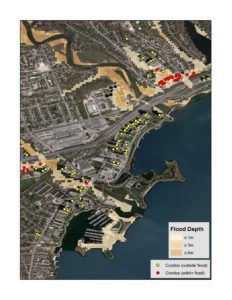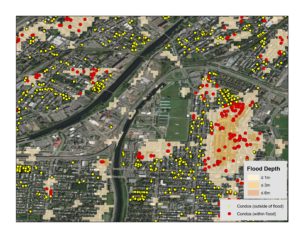A Beginner’s Guide to Geofencing
Read how having millions of consumers walk around with tiny GPS chips in their pockets has opened up new realms of targeted marketing for businesses across the world
There has been a lot of chatter about geofencing in the advertising circles of late, and not without reason. From being tossed around as a ‘buzzword’, geofencing has thoroughly graduated to be the ‘go to’ technology in every marketer’s arsenal. Research firm, Markets and Markets is, in fact, convinced that geofencing market size will cross $1,825 million by 2022. But, what is this marketing technique all about and how does it work? This post tells it all.
What is Geofencing?
Geofencing refers to the creation of a unique virtual boundary or fence around a specific geographical area using technologies like GPS (Global Positioning System) and/or radio frequency identifiers such as WiFi devices and Bluetooth beacons. When someone enters this virtually-barricaded area, an action is triggered – usually in the form of a text message, email alert or app notification being pushed out.
So, if a latte discount coupon pops up on your phone every time you are about to approach a Starbucks outlet or Uber sends you a holler the moment you step out of the airport, you can be sure it is geofencing at work. The same technology fuels your smart home controls as well, letting the thermostat know when you are home/away and setting the temperature accordingly.
To be clear, there is no restriction on how big or wide a geofence can be. You can put an entire city under a geofence if you like, but that would not be very prudent. Geofencing is most effective when it is used to target smaller regions like streets or specific neighborhoods – especially when the aim is to drive more foot traffic to a brick-and-mortar store.
So, for example, if you would like to get more people to visit your store in a mall, make sure the walk time is not more three-four minutes from the place where they receive your notification. Similarly, for drivers, your outlet should not be more than a few blocks down the road.
This is why it is important to have access to a reliable location-based framework that can help you map existing customers in relation to your own stores or the location of your competitors. And if you have accurate datasets for addresses, you can easily identify potential customers located in the proximity of existing clientele as well. Done wisely, geofencing helps in:
- Customer retention: Companies can keep their brand top-of-mind for customers and boost loyalty by sending promotions to people who are near their own outlets
- Customer acquisition: Businesses can target people who are visiting a competitor’s store and offer them incentives to shop from their brand instead. This is also known as geo-conquesting
- Crowd targeting: Many organizations like to put a geofence around mass events like concerts or fairs to target a large number of potential buyers in one go.
Examples of Successful Geofencing
Geofencing has been around for several years, but it wasn’t until the smartphone revolution swept over the world that this digital marketing tool truly could come into its own. Millions of consumers walking around with tiny GPS chips in their pockets have opened up new realms of targeted marketing for businesses across the world. Here’s a sample…
- Whole Foods: One of the most successful examples of geofencing that everyone should know about is that of American grocery store brand Whole Foods. By using a lethal combination of geofencing its own stores as well as its competitors’ stores, the supermarket chain was able to realize a 4.69% post-click conversion rate, which is more than three times the industry average.
- Taco Bell: The fast food chain’s geofence targets people under 30 in a 2-mile-wide area around its stores. By sending out feelers to hungry customers that they can place their order on the Taco Bell app and pick up hot food without any wait time has resonated with the generation that demands instant gratification.
- BMW: The automaker’s geofencing plan focuses more on customer service than grabbing the attention of a prospective buyer. BMW leverages geofencing technologies in its Trackster services which keep a tab on the cars’ geographical position. If a vehicle moves out of its predefined geofence without the use of its keys, the car’s owner is notified.
- North Face: The outdoor sports gear company uses geofencing in conjunction with weather-based information. North Face reports receiving a 79% surge in store visits from customers who got the weather-based geofencing alerts. Of these, 65% customers ended up making purchases.
Truly, geofencing is a bridge that connects the physical world with the digital world. Not only does it make your messaging much more relevant to your customers, it also ensures that you get the biggest bang for your advertising buck. Several businesses world over have already discovered the transformation geofencing can bring to their digital marketing strategy, and yours could be the next.
Contact us today to learn how DMTI can help enable your Geofencing initiatives.













